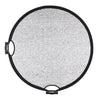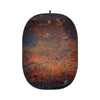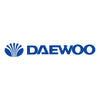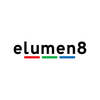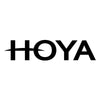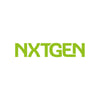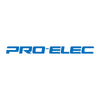Why Product Photography Requires A Different Lens and Light
Product photography is a particular type of photography where objects are displayed and carefully lit in a way that highlights their features. These pictures are meant to be taken in the best possible light in order to convert any casual viewers into shoppers.
While it is true that anyone with a smartphone can take a good quality photo to promote their products, one cannot discount the technique, lighting, editing, experience of a professional photographer with a product portfolio. It's challenging to get the same detailed effect that can be achieved with high-quality professional lenses than with a standard smartphone camera. The key to producing jaw-dropping product images that entice consumers to purchase the latest product is through using proper lighting techniques and lenses that can make any product stand out, whether it's being promoted on a website or e-commerce site.
A stunningly lit product photograph can create interest in consumers and make them spend more time browsing your product portfolio, so companies choose to work with professional photographers who can make their product stand out and add a lot of value to the business. As a professional photographer, this is a great subset to work in as it pays relatively well, and once you've nailed your technique and found the right equipment, you can develop a solid online portfolio that can attract future business.
Lenses
An essential piece of equipment that every photographer needs is a set of good lenses with different focal lengths that can take pictures at different magnifications to provide the desired effect. Every genre of photography requires a different lens with a specific aperture, speed, and build specific for its purpose. Some lenses will be more appropriate for capturing the detailed product images you're looking for in product photography.
Camera Compatibility
Before selecting a lens, check if it's compatible with your camera and check if the sensors are cropped or full-frame, which affects how lenses work. A crop sensor camera's lens has a larger focal length as the crop factor is multiplied by the lens's focal length. If your lens has a larger focal length, it will have a tighter crop that produces more detailed images when photographing small objects.
Lens Types
There are two main lenses used for still life photography: prime and zoom. If you're photographing products or food items, a prime lens is a clear winner as these lenses produce sharper results and don't have any of the moving parts of a zoom lens that can create blurry images.
Aperture
The aperture is also essential for product photography. With a wider aperture that can be between f/1.4 to f/8, there is a lot of light directly hitting the camera sensor, but when the aperture goes down closer to f/22, the light bounces off the edge and does not illuminate the object as well as expected and produces a slightly blurry image. This is why if you're looking for a great lens, make sure the aperture is less than f/16 to ensure you get a detailed image.
Lens Speed
The lens speed is also affected by the aperture, and essentially the smaller the aperture of the lens, the more light enters the camera at any given instance. If the lens has a maximum aperture of f/1.4, it can take better pictures in the dark than a lens with a maximum aperture of f/8. A smaller aperture will be beneficial if you are using diffused artificial lighting in the studio for product photography. Faster lenses also focus on the object in the foreground, making them ideal for closeups in product photography.
If you're looking for a great lens to start your product photography venture, try the YN 50mm f/1.8 lens that is great for product photography as it a prime lens with high speed and smaller aperture for sharper and more crisp images.
YN 50mm F/1.8 Lens (Canon EF Mount)
Light
Product photography requires you to display the object in the best light possible, making lighting an important factor in this niche. If you are shooting the product in a studio, you will need proper light positioning to highlight the product's best features. There are three main types of lights used on a product photography set: key lights, fill lights, and backlights.
The key light is the main source of light which is usually at a 45-degree angle from the camera and pointed directly at the object being photographed.
The fill light is the secondary light which is usually less bright or placed further away than the key light, and it is located on the opposite side of the key light at an angle to the camera to light up any dark spots.
The background light or backlight is placed directly behind or behind and above the object. The primary purpose of this light is to define the subject from the background. It can even be used to create a slight shadow that can help highlight the object while ensuring the background is bright enough for the product to stand out.
Here are some great options for lighting kit that can be used as key lights, fill lights and background lights. They are perfect for product photography.
Studio Flash
Selecting a flash is preferred for product photographers as it provides depth of field and power which continuous lighting are unable to achieve. This makes flash a great option If you are comfortable it and they are also cheaper than continuous lighting.
1. Lumi200 4 head kit, which is designed for photographing items for online clothing stores or garden and furniture set ups.
2. 360 product photography flash kit is commonly used to increase interaction between customer and the product.
 |
 |
Continuous Lighting
Using and setting up continuous lighting is easy for anyone even if they lack experience. This set up works on a what you see is what you get principle and with the recent trend of product videos, this set up is capable of being used for both video and photo.
1.Glowpad is used in the product industry for their softlight effect. These lights have a slim profile, making them perfect for use in tightly spaced studios as the dimensions are 50x50x50cm. This kit is ideal for creating quality 360 product photography
2. Daylite60d 4 head kit is designed for taking pictures for online clothing stores that do not have a massive budget and experience with studio flash. As Daylite60d is a continuous lighting, you get what you see with this product
3. LED200DMKIII 4 head kit is designed for larger set ups such as a lifestyle furniture or clothing shoot. With this set up, you can even create a quality product video.
4. Daylight balanced LED Light Tent is an all-in-one solution for every starter business. This massive LED light tent comes with LED lighting and backgrounds, so you don’t waste anytime setting up. An advantage of using this lighting is that it provides you a control environment without any interference of ambient light as the light tent limits the possibility of adding an additional light. This model has an improved design, which you can remove the side panel (unzip) and place additional light on each side.
 |
 |
 |
 |
Other considerations include diffusers or modifiers such as the 90x90cm Foldable Scrim Diffuser Panel, making the objects appear softer if that is the look you are going for. Reflectors such as the 100x150cm 5in1 Reflector with Grip Handles and 5-in-1 Collapsible Reflector Board (60cm) with Mini Ball Head can also support a fill light by eliminating any dull spots on the product.
 |
 |
 |
Props
1. 3d block – it is often used in advertising products such cosmetics, handbags, heel shoes, watches etc. to create a different layered and dimensional look
2. Optical snoot—it is used to create different effects through gobo projection
3. Colour printed background – it is often used in food photography
4. Another popular prop is the dual side hardwearing background
 |
 |
 |
 |
PIXAPRO 3x4m Crease-Resistant Polyester Printed Background (Wall/Floor Design 8) |
1.5x2.1m Reversible Collapsible Printed Backdrop (Dark Blue/Brown Smoke) |
No two photography styles are alike. Fashion photography might require a different set of lenses and softer lighting if they are trying to capture an ambiance, but product photography requires more focus and precision, which requires a specific set of tools to ensure you get the exciting images your clients are looking for to attract consumers. A savvy photographer can easily succeed in this industry once they learn what the clients are looking for and use the right equipment to achieve it.

























































































































